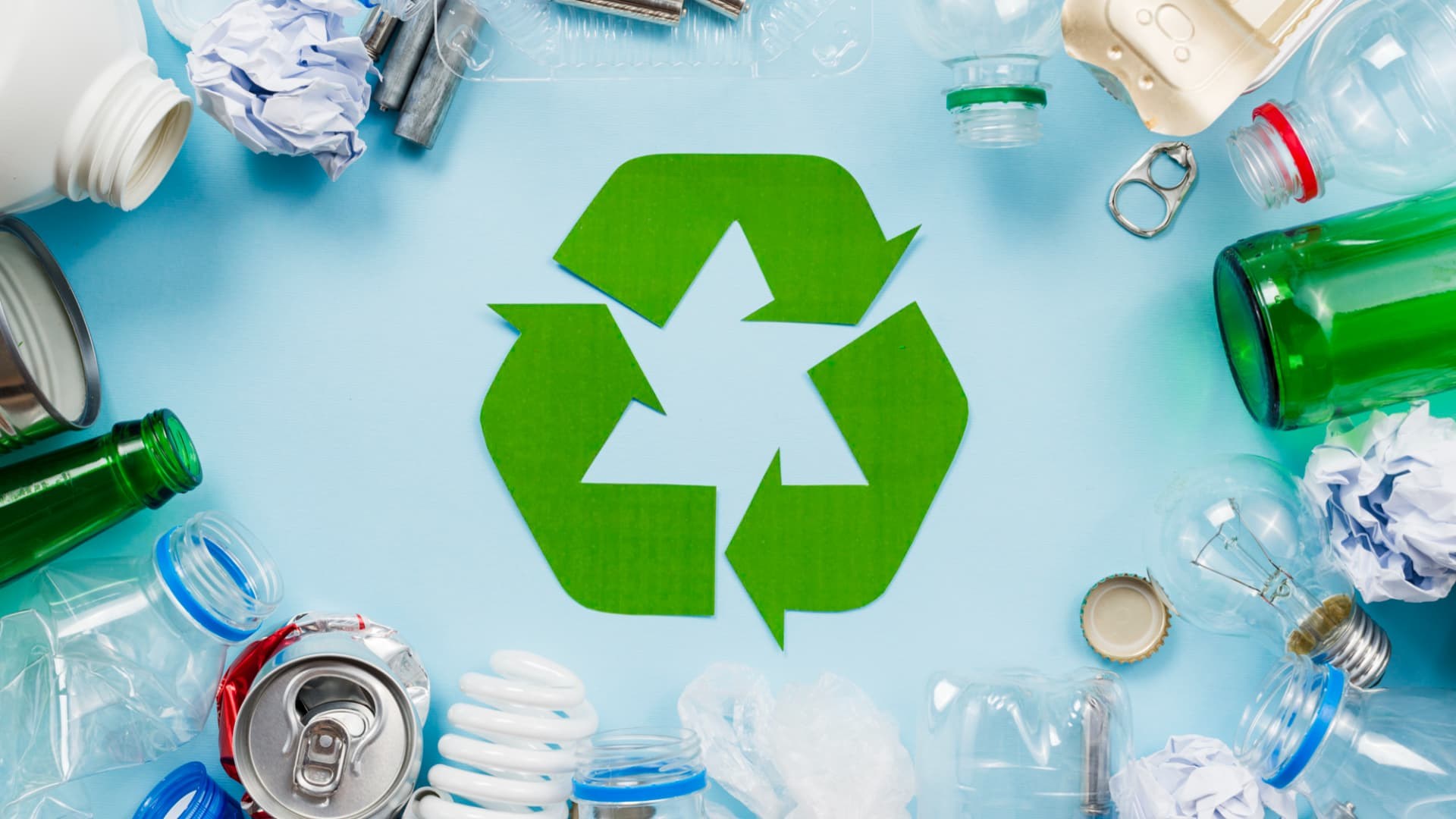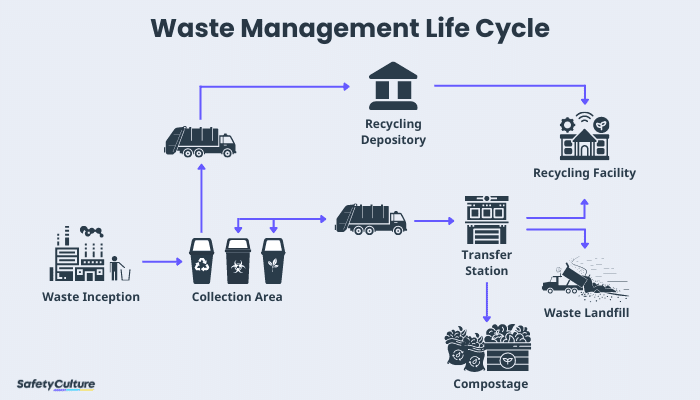Just How Recycling Lives Services Help In Reducing Environmental Impacts
Just How Recycling Lives Services Help In Reducing Environmental Impacts
Blog Article
Exploring Different Kinds Of Waste in Modern Waste Monitoring Systems
The contemporary landscape of waste administration includes browsing an intricate range of waste kinds, each needing specialized handling and disposal techniques to mitigate ecological effects. Municipal strong waste, unsafe waste, electronic waste, and organic waste each existing distinctive obstacles and chances for source recovery.
Metropolitan Solid Waste
Community strong waste, frequently described as household trash or waste, encompasses a variety of discarded products generated by residential, commercial, and institutional sources within a district. This waste stream usually includes things such as packaging, food scraps, backyard trimmings, paper, plastics, textiles, and disposed of family goods. The administration of local solid waste is an essential component of metropolitan preparation and public health and wellness, demanding efficient collection, transport, and disposal systems.
Reliable waste administration systems are created to reduce environmental impact while taking full advantage of source recovery. This usually entails a mix of methods consisting of recycling, landfilling, and composting. Recycling programs target products like paper, glass, steels, and certain plastics, diverting them from landfills and reintroducing them into the manufacturing cycle. Composting organic waste, such as food scraps and backyard trimmings, not just decreases landfill usage yet also produces important soil amendments.
Districts need to also resolve the logistical and economic obstacles related to waste monitoring. Executing pay-as-you-throw systems, enhancing public understanding, and purchasing innovation can significantly enhance waste diversion rates. By incorporating these methods, municipalities can cultivate sustainable communities, lower greenhouse gas emissions, and conserve natural deposits.
Contaminated Materials
.jpg)
Efficient unsafe waste administration involves several essential steps: recognition, treatment, segregation, and disposal. Partition makes sure that hazardous materials are saved independently from non-hazardous waste to stop cross-contamination.
Governing frameworks, such as the Source Preservation and Recovery Act (RCRA) in the USA, supply standards and criteria for unsafe waste monitoring. Adherence to these guidelines, coupled with improvements in waste treatment modern technologies, is necessary in reducing the dangers linked with unsafe waste.
Digital Waste
Digital waste, commonly referred to as e-waste, represents a quickly growing obstacle in waste monitoring systems internationally. This sort of waste includes disposed of digital tools and equipment such as mobile phones, computers, televisions, and other digital home appliances. The fast rate of technological development, combined with decreasing item life-spans and consumer demand for the most up to date gadgets, has actually exponentially boosted the quantity of e-waste generated every year.
E-waste is particularly troublesome as a result of its complicated make-up, typically having unsafe compounds like cadmium, content mercury, and lead, which present significant ecological and health and wellness threats otherwise appropriately managed. Alternatively, e-waste additionally contains important materials such as copper, gold, and silver, which can be recouped and reused. The twin nature of e-waste-- both dangerous and beneficial-- demands specific handling, reusing, and disposal procedures.
Efficient e-waste management entails strict governing structures, durable collection systems, and advanced reusing modern technologies. Public awareness and involvement are essential, as inappropriate disposal methods, such as unlawful unloading and casual recycling, intensify environmental contamination and carcinogen. As a result, improving e-waste monitoring techniques is crucial for reducing eco-friendly impact and recouping beneficial resources in a significantly electronic globe.

Organic Waste
Organic waste, making up kitchen scraps, yard trimmings, and farming deposits, represents a significant section of the global waste stream. This kind of waste is naturally degradable, suggesting it can be broken down by bacteria into simpler organic substances. Despite its potential for all-natural decay, inappropriate management of organic waste can result in negative ecological effects, including the exhaust of greenhouse gases such as methane, which add to climate adjustment.
Efficient monitoring of natural waste is critical for decreasing these ecological influences (recycling lives services). Composting is a commonly adopted approach, transforming organic waste into nutrient-rich compost that can boost soil health and farming efficiency. Additionally, anaerobic food digestion is an arising technology that transforms organic waste into biogas, a renewable resource resource, and digestate, which can be used as fertilizer
Municipalities and waste administration entities should execute robust organic waste collection and treatment programs to maximize the advantages of these processes. Public education projects can also play a crucial duty in motivating families and organizations to different natural waste from other sorts of waste. By prioritizing the administration of natural waste, cultures can lower garbage dump use, reduced greenhouse gas exhausts, and create important by-products for farming usage.

Ingenious Waste Monitoring
In the realm of waste management, ingenious approaches are changing exactly how cultures handle next their refuse, intending for sustainability and efficiency. One noticeable advancement is the execution of clever waste containers furnished with sensing units that keep track of fill levels and enhance collection routes.
Another noteworthy advancement is the adoption of waste-to-energy (WtE) modern technologies. By converting non-recyclable waste right into usable power with procedures such as incineration and anaerobic digestion, WtE lowers garbage dump concern and gives an eco-friendly energy resource. Developments in chemical recycling allow for the failure of complicated plastics right into their initial monomers, enabling the production of brand-new, high-quality plastic products.
Furthermore, the round economic situation design is gaining traction, highlighting the style of items and systems that focus on reusability and source efficiency. This alternative approach motivates markets to minimize click here to read waste generation from the beginning. With these cutting-edge strategies, modern-day waste management systems are not only resolving the instant challenges of garbage disposal yet also leading the means for a more lasting future.
Verdict
An extensive understanding of municipal strong waste, dangerous waste, digital waste, and natural waste, paired with the application of ingenious waste monitoring remedies, is important for alleviating ecological influences. Integrating innovations such as wise waste bins and waste-to-energy systems can boost efficiency and sustainability. Reliable waste management strategies not only foster source healing however also advertise public awareness and engagement, inevitably adding to the development of a round economic situation.
The modern landscape of waste administration includes navigating a complicated range of waste types, each needing specialized handling and disposal methods to alleviate environmental effects. Municipal solid waste, unsafe waste, electronic waste, and natural waste each existing unique obstacles and chances for source healing.Digital waste, frequently referred to as e-waste, represents a swiftly growing challenge in waste monitoring systems internationally. With these innovative techniques, modern waste administration systems are not only addressing the prompt challenges of waste disposal but also leading the means for a much more sustainable future.
A comprehensive understanding of municipal strong waste, hazardous waste, digital waste, and organic waste, paired with the implementation of cutting-edge waste management remedies, is crucial for minimizing ecological effects. (recycling lives services)
Report this page